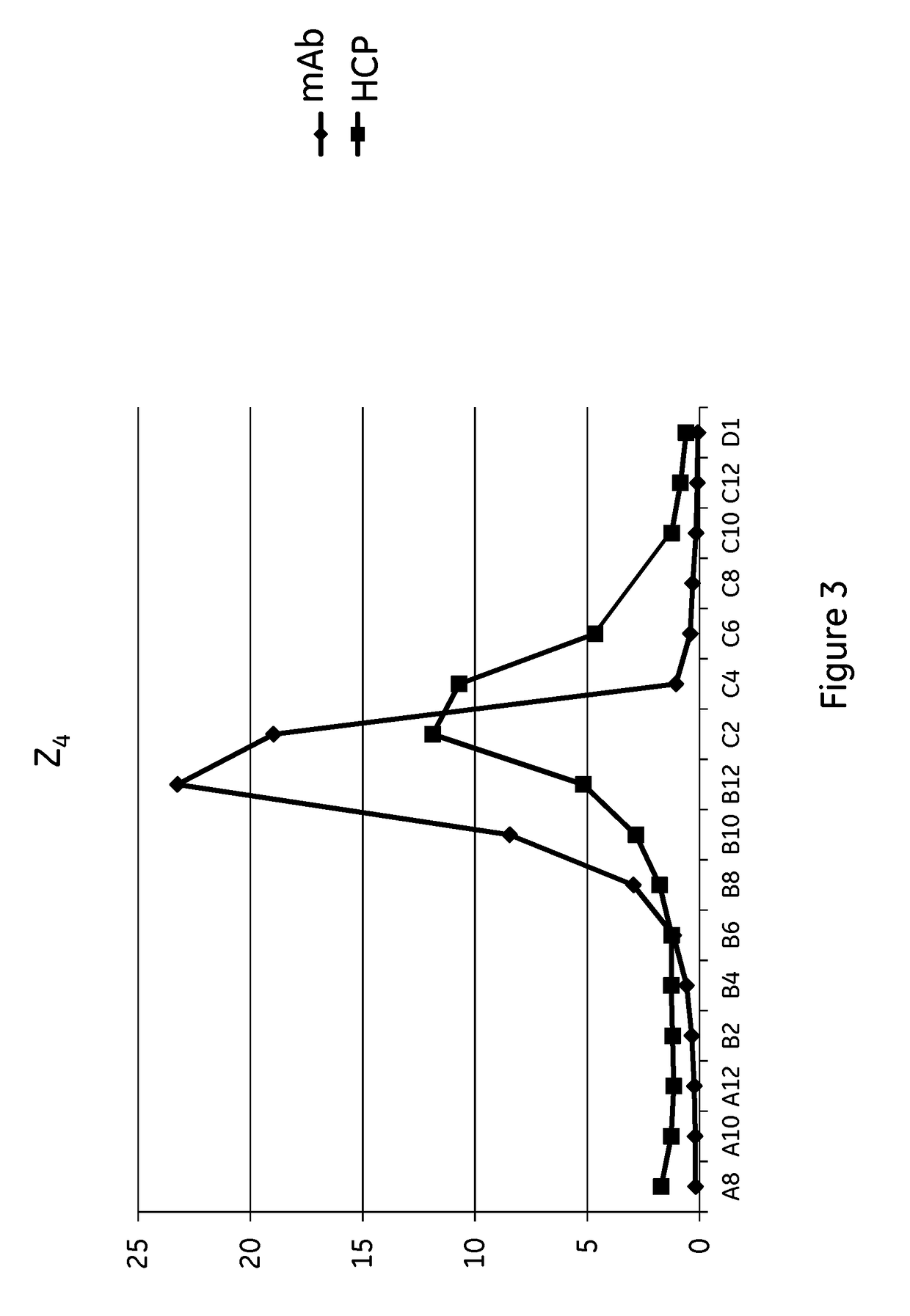Affinity chromatography matrix
a technology of affinity chromatography and matrix, which is applied in the field ofaffinity chromatography, can solve the problems of antibody aggregation or sensitive, decrease in capacity, etc., and achieve the effect of improving ph levels, facilitating subsequent purification steps, and reducing the number of steps
- Summary
- Abstract
- Description
- Claims
- Application Information
AI Technical Summary
Benefits of technology
Problems solved by technology
Method used
Image
Examples
example 1
Prototypes
[0112]Mutant Z(H18E)2 (SEQ ID NO: 9): ligand dimers containing two copies of protein Z, each containing the H18E substitution (Z(H18E)2), with ligand density of 5.2 mg / ml.[0113]Comparative prototype Z2 (similar to SEQ ID NO: 9, expect H18 are not substituted to E): ligand dimer containing two copies of protein Zvar2 (Z2), with ligand density of 5.9 mg / ml.[0114]Mutant Z(H18S,P57I)4 (SEQ ID NO: 11): ligand tetramer containing four copies of protein Z, each containing the H18S,P57I substitutions Z(H18S,P57I)4, with ligand density of 5.3 mg / ml.[0115]Mutant Z(H18S,N28A)4 (SEQ ID NO: 12): ligand tetramer containing four copies of protein Z, each containing the H18S,N28A substitutions, with ligand density of 6.9 mg / ml.[0116]Comparative prototype Z4 (similar to SEQ ID NO: 11, expect H18 and P57 are not substituted to S and I respectively): ligand tetramer containing four copies of protein Zvar2 (Z2), with ligand density of 6.0 mg / ml.[0117]Comparative prototype Z(H18S)4 (similar to...
PUM
| Property | Measurement | Unit |
|---|---|---|
| pH | aaaaa | aaaaa |
| pore size | aaaaa | aaaaa |
| density | aaaaa | aaaaa |
Abstract
Description
Claims
Application Information
 Login to View More
Login to View More - R&D
- Intellectual Property
- Life Sciences
- Materials
- Tech Scout
- Unparalleled Data Quality
- Higher Quality Content
- 60% Fewer Hallucinations
Browse by: Latest US Patents, China's latest patents, Technical Efficacy Thesaurus, Application Domain, Technology Topic, Popular Technical Reports.
© 2025 PatSnap. All rights reserved.Legal|Privacy policy|Modern Slavery Act Transparency Statement|Sitemap|About US| Contact US: help@patsnap.com



